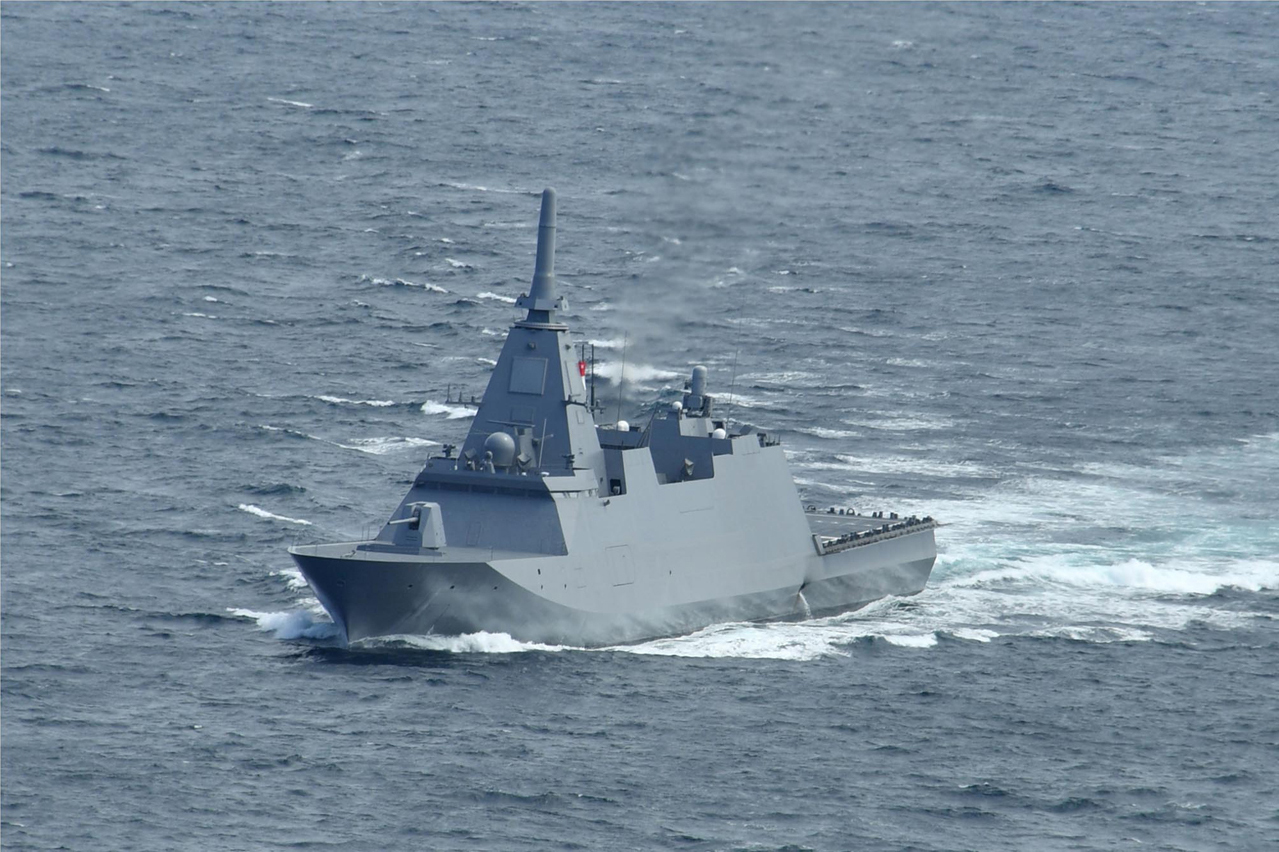Not the Yamato, But Japan's Mogami-class Guided-missile Frigates Are Powerful Warships

There remain modern proponents of battleships who argue that the U.S. Navy should return its old Iowa-class warships to service. Yet apart from Russia's antiquated battlecruisers, no nation on the planet bothers with such large warships anymore. Smaller vessels can provide much of the firepower and are far more cost-effective to build and operate.
Japan built the largest and most heavily armed battleship in the world, but Yamato sits in a watery grave. Japan's modern constitution, which doesn't allow for weapons employed in wars of aggression, certainly deep-sixed any chances Tokyo would build another battleship. The Japan Maritime Self-Defense Force (JMSDF) has focused instead on highly capable guided-missile frigates.
The stealthy Mogami class, the backbone of the JMSDF, is noted for striking a "delicate balance that reduces cost and crew size while providing a modest solution for 21st-century requirements," the U.S. Naval Institute wrote last September.
Also noteworthy is the speed at which Japan has been able to produce the warships. The first-of-class JS Mogami was only commissioned in April 2022.
Tokyo is now on track to acquire a full dozen multirole Mogami-class frigates between 2024 and 2028. The vessels are being built at a pace of two ships per year at the Nagasaki and Tamano shipyards by Mitsubishi Heavy Industries (MHI) and its subsidiary, Maritime Systems.
The fifth of a planned 12, JS Yahagi was commissioned in Nagasaki in late May, while JS Agano was handed over to the JMSDF this week.
Not Battleships – But Battle Worthy
Weighing 5,500 tons at full load, and with an overall length of 132 meters (433 feet), the vessels are significantly smaller than any battleship. Yet the vessels, which according to Janes are powered by a Combined Diesel and Gas propulsion configuration comprising two MAN 12V28/33D STC diesel engines and one Rolls-Royce MT30 gas turbine engine, can reach a top speed of 30 knots. They require a crew complement of just 90 officers and sailors, supported by automated systems.
The vessels also don't have the big 18.1-inch guns of Yamato and have just a BAE Systems 127 mm (5-inch) naval gun in the primary position. However, the Mogami-class guided-missile frigates are equipped with the Lockheed Martin 16-cell Mk16 Vertical Launching System for the MHI Type 03 Chu-SAM medium-range surface-to-air missile, and two quad launchers for MHI's Type 17 anti-ship missiles, which have a range of 250 miles. The vessel's defense capabilities include Raytheon's SeaRAM Close-In Weapons System, which can be used against incoming missiles and small watercraft.
The Mogami class could be a crucial component of the JMSDF, able to carry out a variety of missions from surveillance to minesweeping, as well as anti-surface, anti-air, and anti-submarine warfare.

The JMSDF might prove that you don't need battleships when small frigates can do the job far more effectively. Even a dozen of the vessels will require far fewer sailors than what it took to man Yamato.
Author Experience and Expertise: Peter Suciu
Peter Suciu is a Michigan-based writer. He has contributed to more than four dozen magazines, newspapers, and websites with over 3,200 published pieces over a twenty-year career in journalism. He regularly writes about military hardware, firearms history, cybersecurity, politics, and international affairs. Peter is also a Contributing Writer for Forbes and Clearance Jobs. You can follow him on Twitter: @PeterSuciu. You can email the author: Editor@nationalinterest.org.
